When it comes to a work of art, context is everything. Today, one of the greatest challenges for art historians when considering a work of art is to reconcile an artist’s original intent with the modern context in which it now lives. For art history buffs, one fun aspect of visiting an art museum is identifying the unexpected, amusing, and sometimes absurd depictions of life in bygone eras. Reflecting on works created hundreds of years ago can shed light on how the human experience has evolved over the span of many centuries.
Recently, art history has collided with the world of internet memes, resulting in a wave of articles and blogs around the web solely devoted to reimagining the meaning of a work of art in amusing ways. Whether you are a museum visitor, an art historian, or someone who simply enjoys a funny visual, these art history memes offer a satirical look at the art world and provide unique insight into the creative choices of some of our favorite artists.
To celebrate this trend, we’ve compiled works of art from 500 years of art history to create memes that mix the artists’ original intent with a modern context. Explore the significance of each work and the circumstances under which it was originally conceived, along with a suggested (and highly relatable) reinterpretation.
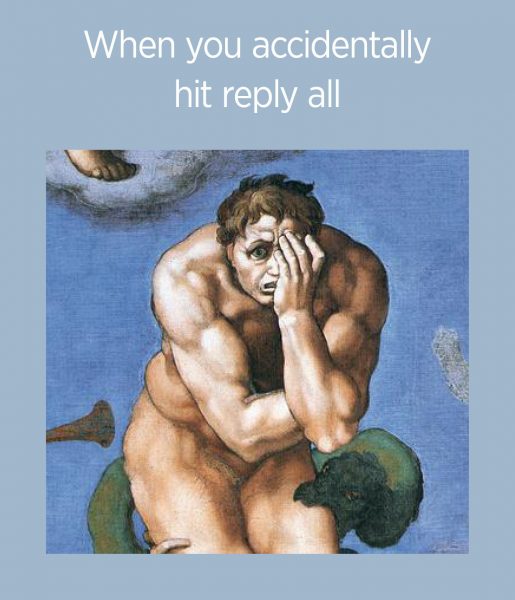
“The Last Judgment” was created by Michelangelo in the 16th century. The monumental work depicts over 300 figures, including the image of Damned Man, pictured above. The full work portrays the Second Coming of Christ and God’s judgment on humanity. The painting was inspired by Dante’s Divine Comedy.
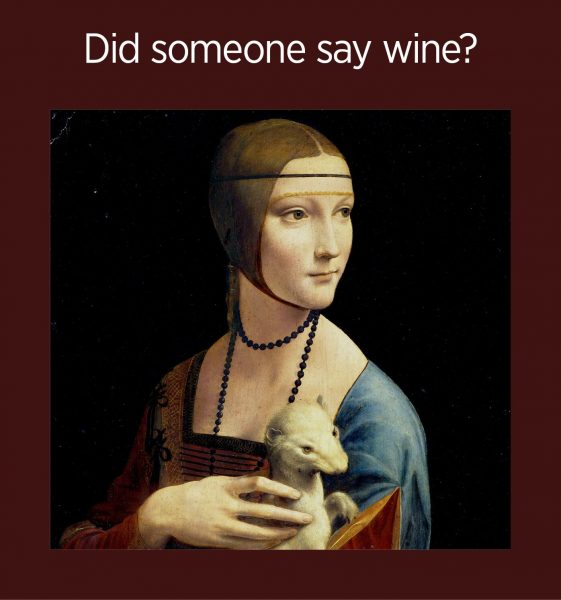
Lady with an Ermine is one of only four portraits of women painted by Leonardo da Vinci. The subject of the work is Cecilia Gallerani, and the piece was painted when she was the mistress of Leonardo’s employer, Ludovico Sforza, the Duke of Milan. The ermine in the portrait has symbolic significance, as many believe is it meant to signify purity.
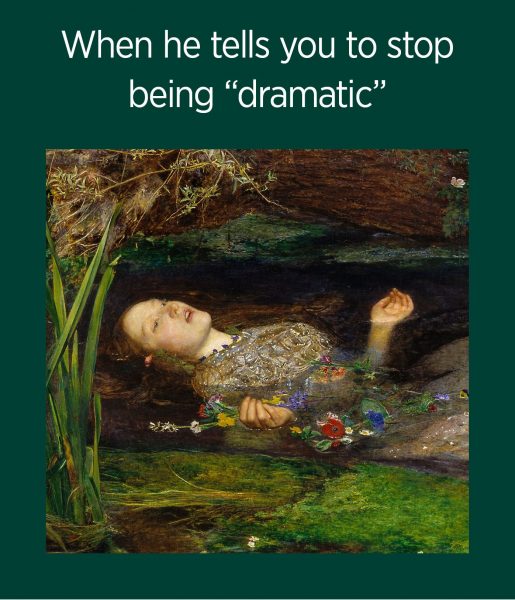
In this painting, John Everett Millais depicts a scene from Act IV, Scene vii of “Hamlet” in which Ophelia is driven mad when her father is murdered by Hamlet. Millais created this painting with a focus on the landscape at first, a decision that is in line with the stylistic choices of the Pre-Raphaelite Brotherhood. He later decided to add the figure of Ophelia to the image. Today, this image is commonly used in memes that celebrate both art and literature.
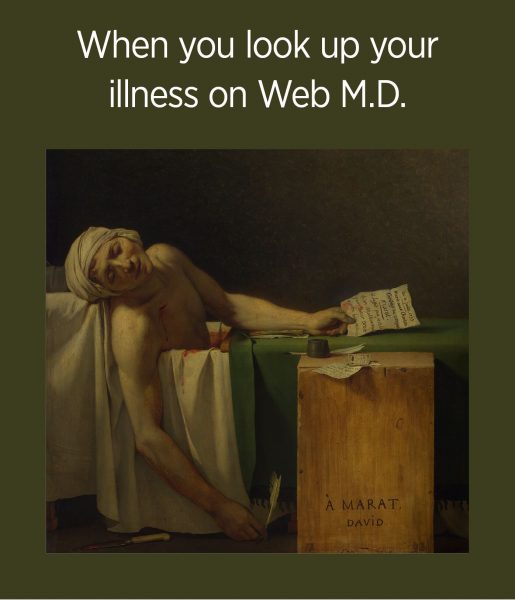
This painting depicts the death of Jean-Paul Marat, a French revolutionary leader who was murdered during the rebellion. Due to the nature of Marat’s death, a realistic depiction was impossible, which explains why this painting features somewhat idealized imagery. Jacques-Louis David was highly sympathetic with the revolutionary cause, and his works are hailed by many as demands for political action during this time period.
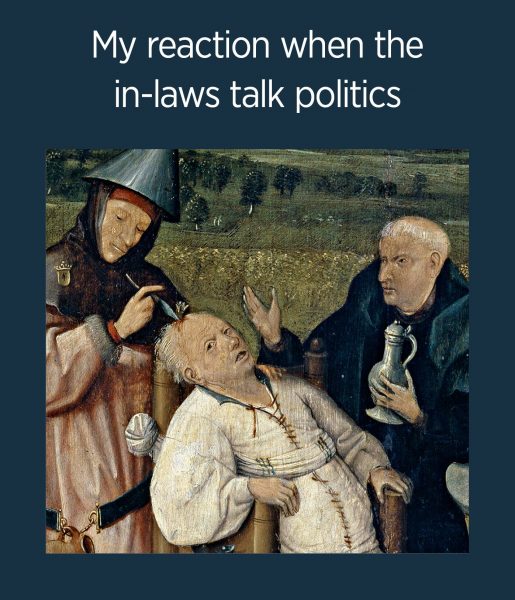
Hieronymus Bosch depicts a satirical image of a stone operation, in which a patient would have a stone of folly removed from his forehead in an effort to cure his stupidity. The image focuses on a group of people in a circle and portrays a scene of human madness in a remote rural world separate from urban life. This image was popular in many Northern European countries during this time.
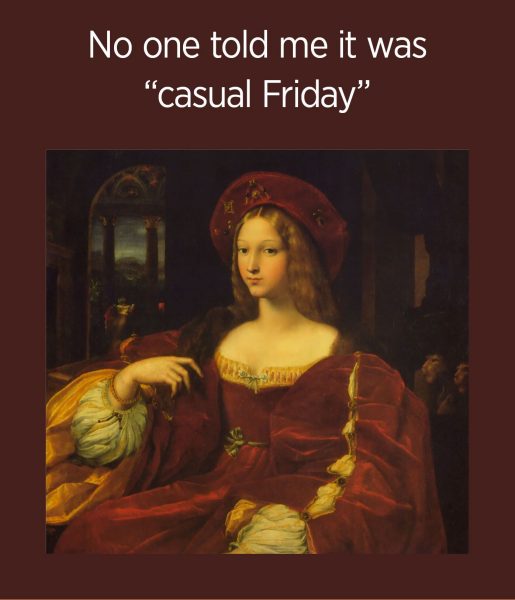
This portrait features a woman who was previously identified as Joanna of Aragon, but who we now know to be Doña Isabel de Requesens y Enrìques de Cardona-Anglesola. The work has been attributed to multiple artists, including the School of Raphael. Most believe that the work was executed by Giulio Romano based on a sketch that Raphael created.
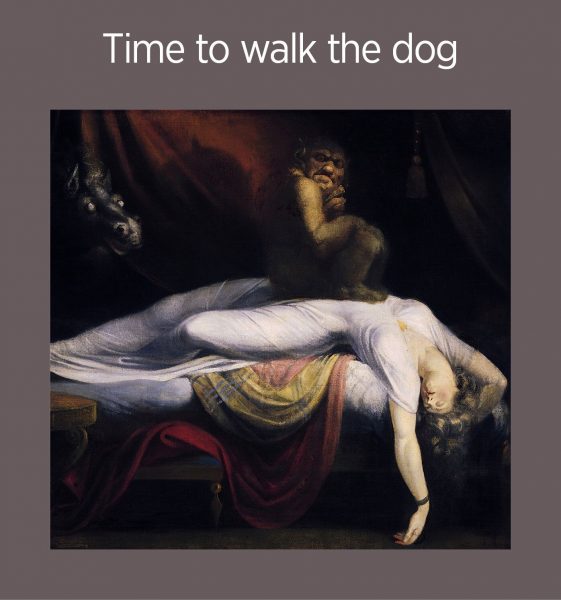
Henri Fuseli’s image of a woman in the grips of a nightmare is filled with mystery and intrigue, yet the emotions portrayed feel uncomfortably relatable to the viewer. Many disagree on the artist’s intended message. Some believe that the painting’s aim is to portray the emotions that the woman experiences during a night terror, while others believe it may be depicting sexual desire.
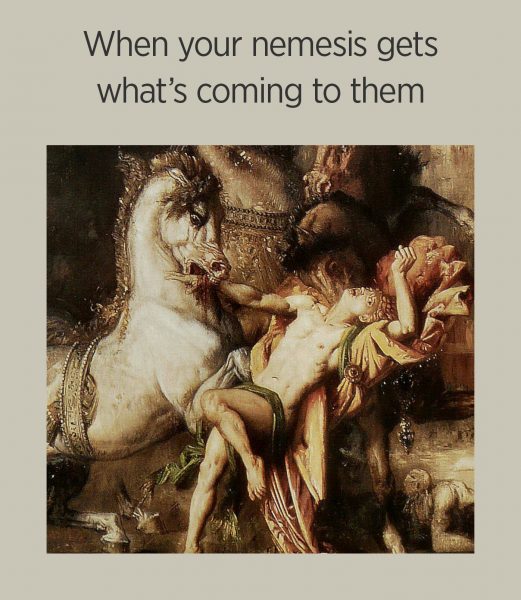
Gustave Moreau’s work “Diomedes Being Eaten by His Horses” depicts four wild horses ripping apart King Diomedes as an obscured figure of Hercules looks on. This scene represents the eighth labor of Hercules, who was ordered to capture King Diomedes’ four flesh-eating horses. Moreau uses delicately applied watercolor to enhance the dramatic scene and add detail to the painting.
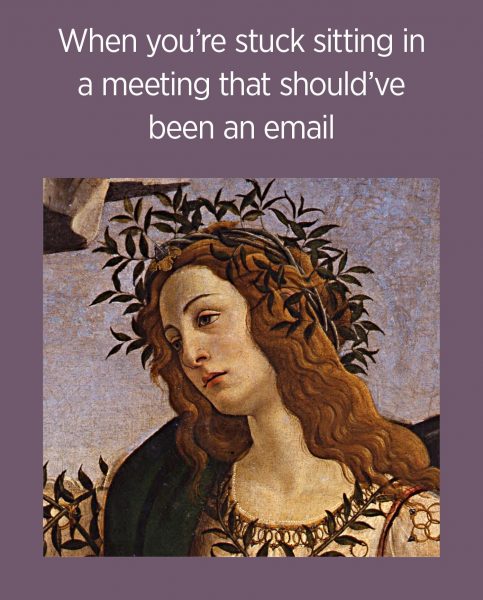
Some scholars believe that this painting is meant to be a companion to Primavera, one of Botticelli’s most famous works. Pallas and the Centaur was lost for centuries but was rediscovered towards the end of the 20th century. Historians suggest that the woman featured in the image may represent an Amazon warrior known as Camille, who was described by Virgil in the Aeneid as powerful and pure.
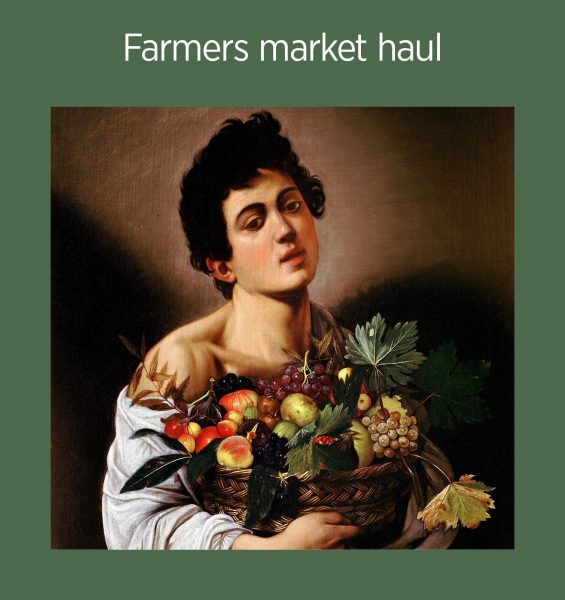
Caravaggio created this painting when he was still relatively unknown. This work is a powerful example of his ability to paint his subjects exactly as he saw them, without idealizing their form. The level of detail of the leaves and fruit is so realistic that horticultural scientists have been able to accurately determine each individual cultivar simply by analyzing the image.

This image is a self-portrait of the artist, Gustave Courbet. The painting perfectly captures his feelings of melancholy and disillusionment by depicting a facial expression appears both fearful and deranged. The painting confronts the viewer with an intensity and inescapability rarely seen in arts and speaks to the artist’s struggle to find his voice and create art that truly represented himself.
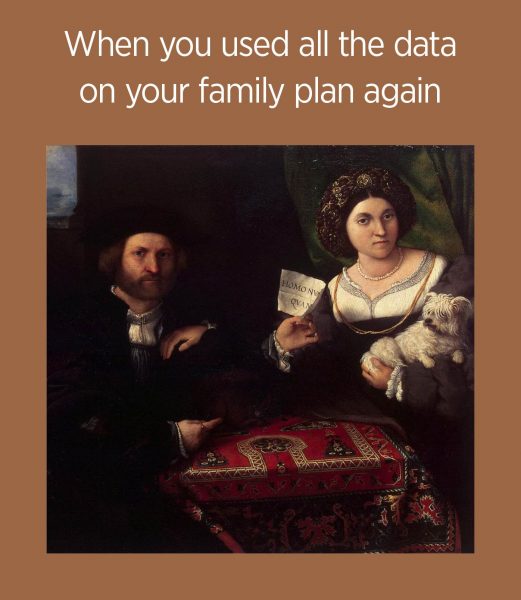
The painting was created by Russian artist Lorenzo Lotto in the 16th century and is rich with symbolic meaning. The woman is holding a dog, a symbol of fidelity, to show her devotion to her husband, while he holds a paper with the Latin words for “man, never” to show that he will also stay faithful to her. The work was created a few years after the patron’s wife passed away, which may explain why the artist chose to give her a delicate, heavenly expression and an angelic glow.
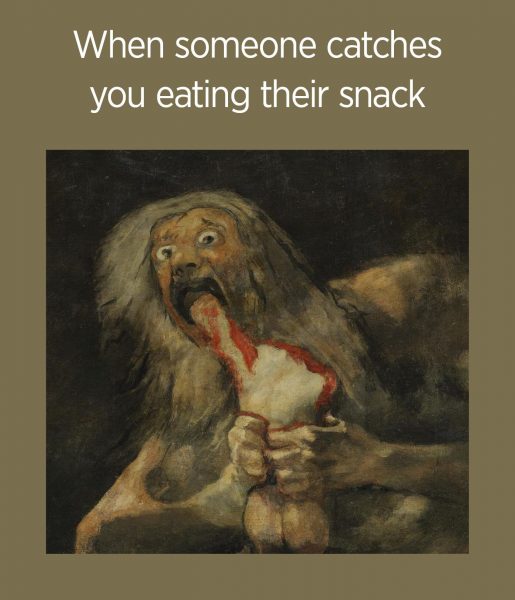
“Saturn Devouring His Son” was created by Spanish artist Francisco Goya in the 19th century. This painting depicts the Greek titan trapped in a wild state that compels him to devour his own son due to fear that he would someday be dethroned by his children. Based on this visual and other paintings that Goya produced, some believe that he may have suffered from mental illness, while others simply think that he was showcasing his bitter feelings about the human experience.
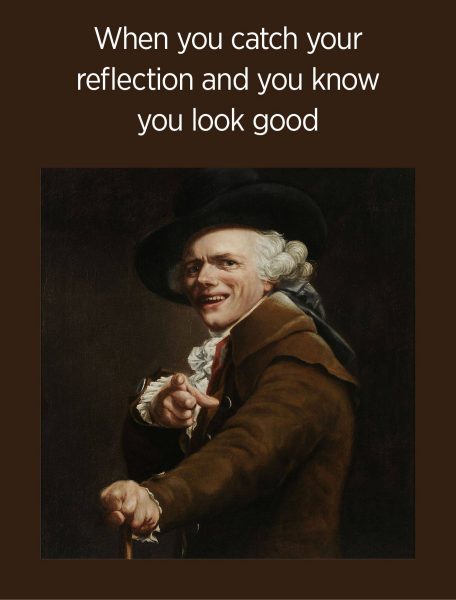
Joseph Ducreux was a French nobel and portrait painter who created portraits at the court of Louis XVI, including the king’s last portrait before his execution. His self-portrait, in which he imitates the expression of a mocker, has become a popular internet meme.
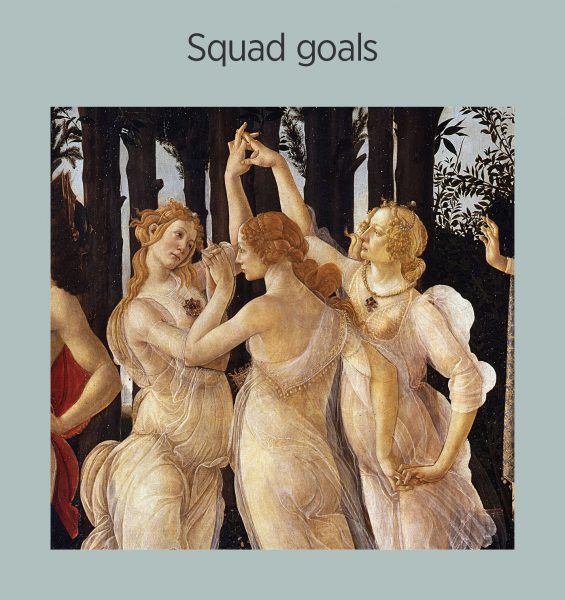
Sandro Botticelli’s painting Primavera highlights a group of figures dancing in an orange grove. While Primavera means “spring,” the exact meaning of this work is unknown. The three women featured in the picture are meant to represent The Three Graces, perceived feminine virtues of chastity, love, and beauty.
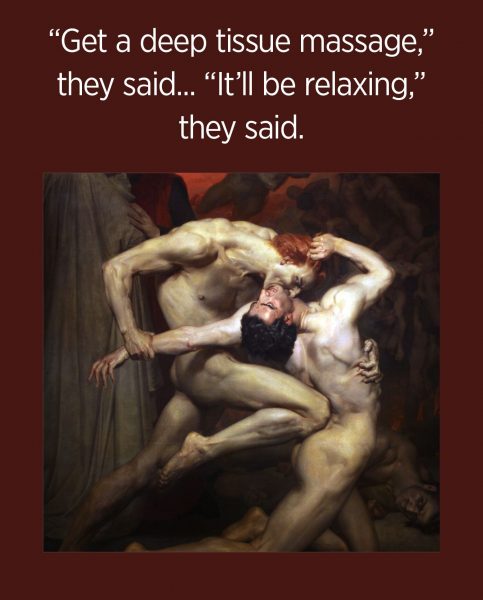
“Dante and Virgil” is the only painting in which artist William-Adolphe Bouguereau explored themes of hellfire, anguish, and retribution. The image focuses on Dante and Virgil in the eighth circle of hell, where liars and counterfeiters spend eternity in Dante’s Inferno. The tense movements and determined faces featured in the work illustrate the desperation and agony of the subjects and are juxtaposed against the beauty of the sculpted bodies featured in the foreground of the image.
The recent popularity of art history memes has provided a fun way to reimagine the intent behind some of the most iconic paintings in art history and reflect on the legacy of beloved creators.
*extracted from invaluable.com
*images courtesy of the internet
